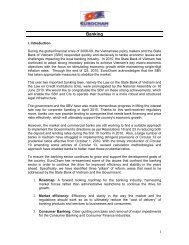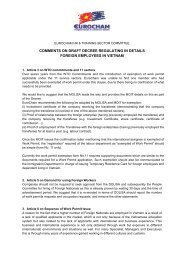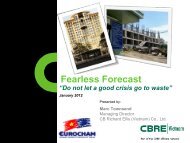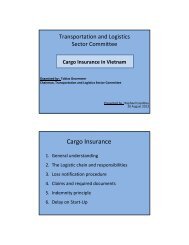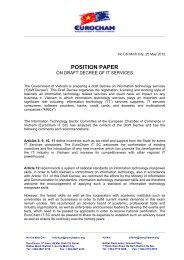ASEAN MUTUAL RECOGNITION ARRANGEMENT ON TOURISM ...
ASEAN MUTUAL RECOGNITION ARRANGEMENT ON TOURISM ...
ASEAN MUTUAL RECOGNITION ARRANGEMENT ON TOURISM ...
Create successful ePaper yourself
Turn your PDF publications into a flip-book with our unique Google optimized e-Paper software.
6.3 Conformity AssessmentAccording to the <strong>ASEAN</strong> Framework Agreement on Mutual Recognition Agreements:‘Conformity Assessment means systematic examination to determine the extent towhich a product, process or service fulfils specified requirements’. Forinternational arrangements, cross-border conformance can occur in two ways:1. Countries can accept the results of other country’s conformanceassessment as the basis for their own conformity assessment decisions.This is useful as it does not need extensive promotional campaigns, but itdoes less to reduce redundancy in assessment; or2. They can promote the direct acceptance of the conformance assessmentresults of the other countries by customers in their own country. Thisneeds considerable promotional activity, but eliminates most of theredundancy in the system. This is the most common arrangement and theone recommended for the <strong>ASEAN</strong> MRA in tourism.Countries therefore mutually accept each other’s conformity assessment in termsof tourism qualifications. This acceptance relates to the process of conformityassessment. It is important to note that this does not imply harmonisation wherethe exporting country checks the regulations of the importing country beforeexport. The purpose of an <strong>ASEAN</strong> MRA – TP is therefore to ensure that all ten<strong>ASEAN</strong> countries accept the conformity assessment relating to tourism competencyqualifications produced in any single <strong>ASEAN</strong> Member State.6.4 Rationale for the ApproachIn order to achieve conformity, each of the ten <strong>ASEAN</strong> countries will need to havetheir tourism qualification system evaluated against the requirements establishedunder the MRA – TP to demonstrate their competence to be part of the MRA. Thisarrangement will involve the comparison of tourism qualifications across the ten<strong>ASEAN</strong> countries.6.4.1 Equivalence AssessmentHere, the key process is equivalence assessment – the process of judging theconformity assessment procedures and/or rules of another country to beequivalent to national conformity assessment procedures and/or rules. If the MRA –TP is to be a robust arrangement then this equivalence assessment needs to takeplace.The reason that the equivalence assessment process is so pivotal to this MRArelates to the fact that tourism is comprised of non-regulated occupations:P a g e | 49





